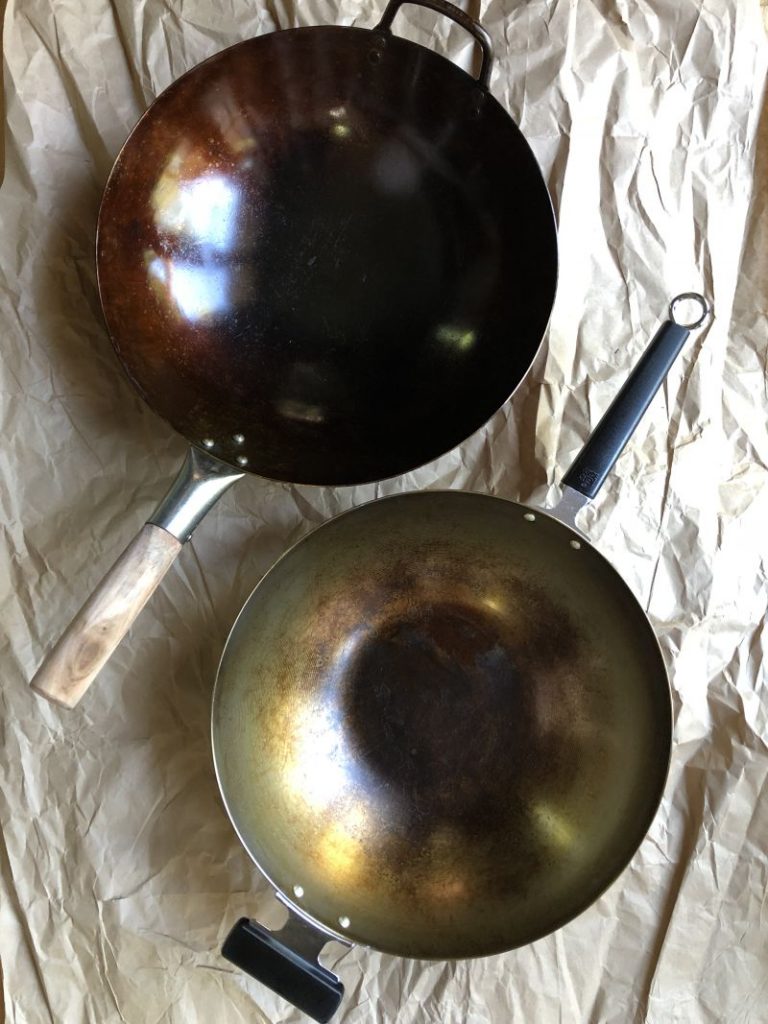
A wok that’s well maintained can be a friend for life. But like all relationships, you want to start things out right. If you’ve purchased a new carbon steel or cast-iron wok like one of those mentioned in the wok buying guide, you need to season it before you set out on your maiden voyage to cook something delicious. How to season a wok? It’s simple to do, and you have options.
Over the years, I’ve tried three different wok seasoning methods. My experiences may help you choose how to clean and season your wok.
Cleaning the Wok
Set aside time to clean the wok of machinery oil used during manufacturing. If a wok comes with specific cleaning instructions, follow it. This initial cleaning is seldom a relaxed thing. Expect to involve vigor.
Tackle the first cleaning this way: First, scrub the pan with soapy water. Wear gloves and use a scouring pad. Dishwashing soap is fine at this point. If dark machine oil runs off, spray on a cleaner such as Simple Green to remove it.
If the wok has a waxy or lacquer-like coating that doesn’t come off with scrubbing (see below from the Joyce Chen carbon steel wok), fill the pan three-quarters full of water, add ¼ cup salt or baking soda and boil for 10 to 15 minutes; after the coating lifts off, turn off the heat, cool a few minutes, then carefully empty the wok and wash it.
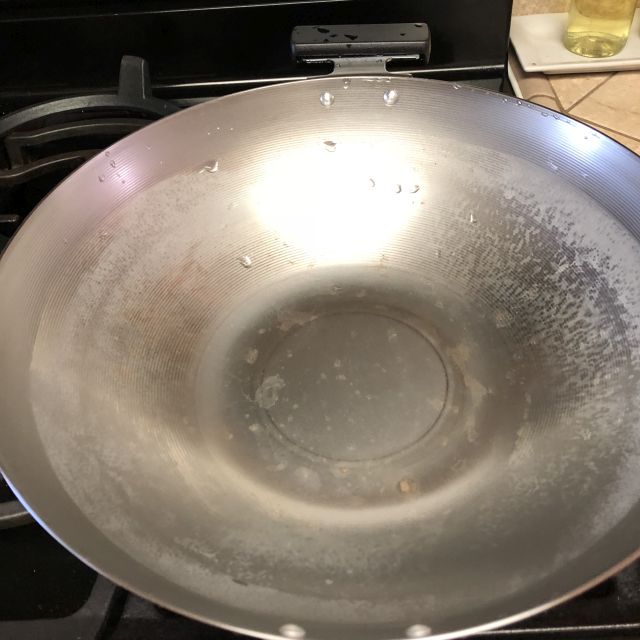
Regardless of washing method, dry the wok over medium or medium-low heat.
Now season the wok to further get rid of any metallic tastes and work oil into the metal crevices. There are many seasoning methods. What you choose depends on ingredients at hand, plus the time you want to invest.
Wok Seasoning Option 1: Stir-fry a bunch of aromatics
Of the many ways to season a wok, the easiest is to stir-fry ginger and green onions. Heat the wok over high heat, then swirl in 2 tablespoons of canola, peanut, or vegetable oil. Then add ½ cup sliced unpeeled ginger and 1 bunch of green onions cut into 2-inch sections. (You can sub a sliced whole onion or a bunch of garlic chives cut into 3-inch lengths.
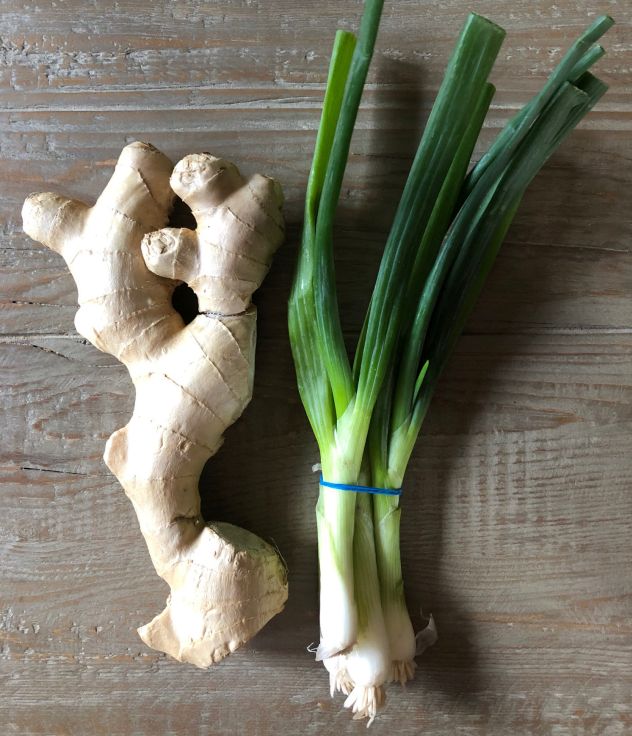
Turn down the heat to medium, then stir-fry for 15 to 20 minutes, pressing the mixture all over the wok’s interior, until the vegetables are dry and crusty. Use a wooden or flexible spatula or turner. Practice your wokking skills!
When done, remove the wok from the heat, let cool, then discard the solids. Rinse (use no dish soap plus a soft sponge) then dry the discolored-but-seasoned wok on the stove. It’s now ready to use.
Wok Seasoning Option 2: Fry potato peels and salt
I’ve used this on a new wok and it’s also good for re-seasoning a sticky old wok. This method is what I’ve used on carbon-steel skillets. The potato peels-and-salt approach works like a charm, especially when you plan to make a potato dish. Save the peels.
What you need: ⅓ cup oil (such as canola, peanut, or vegetable), ⅔ cup table salt or fine sea salt (coarse salt pops and jumps), and the peels of 2 potatoes (any kind).
Put all the ingredients in the washed, dried wok. Cook over medium heat for about 10 minutes, stirring and pressing against the wok walls to the rim, until dark and crisp. I like to press the ingredients up all along the wok interior and let things sizzle. They sometimes stick to the walls so you can let them hang out.

When the ingredients are dark and spent, turn off the heat. Let things cool, then dump out the solids. Rinse the wok, wiping with a soft sponge but use no dish soap. Dry the wok over a medium-low or low flame. Rub in a little oil, if the wok looks like it needs a little something extra. You’re now ready to wok something tasty.
I didn’t invent this method, but rather borrowed it from America’s Test Kitchen. Details are in this prior post.
Wok Seasoning Option 3: Bake the wok
To put a beautiful patina on a wok inside and out, bake it. The oven method is favored by Tane Chan, the owner of the Wok Shop. It’s non-traditional because old-fashioned Chinese kitchens lack ovens. Tane is proudly Chinese American. Of all the methods, it’s my favorite. Two two woks at the top were baked. The process requires time but try it.
After cleaning and drying wok, assess its handles.
Does your wok have plastic handles that can be unscrewed? If yes, remove them with a screwdriver. That was the case with the Joyce Chen wok I bought from Amazon.
If your wok has plastic handles that cannot be removed, like the cast iron wok below from the Wok Shop, wrap the handles in foil. (I tried one covered in foil and one uncovered. One handle eventually cracked during cooking so use foil!) Preheat the oven to 350F with a rack in the center position.
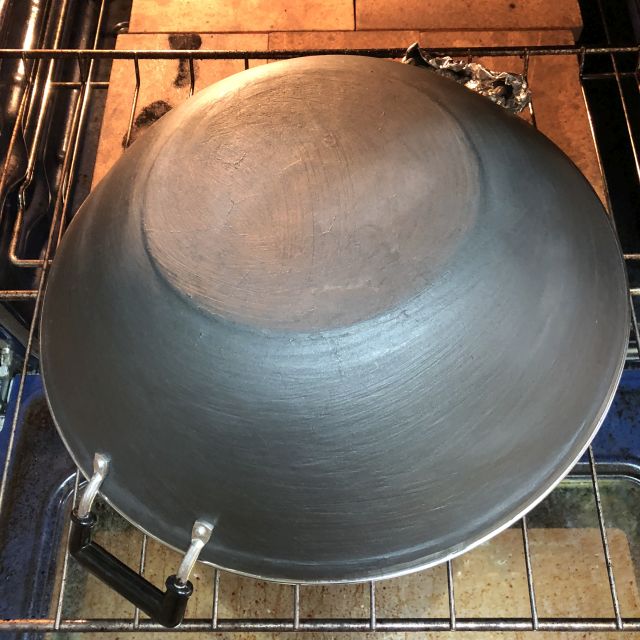
If your wok has a wooden handle(s) that doesn’t budge, like the one on this hand-hammered pow wok, wet a dishtowel or wash cloth and wrap it around the wooden handle. Then wrap it in foil. Repeat if you have another handle. This protects the parts during baking. Preheat the oven 425F with a rack in the center position.
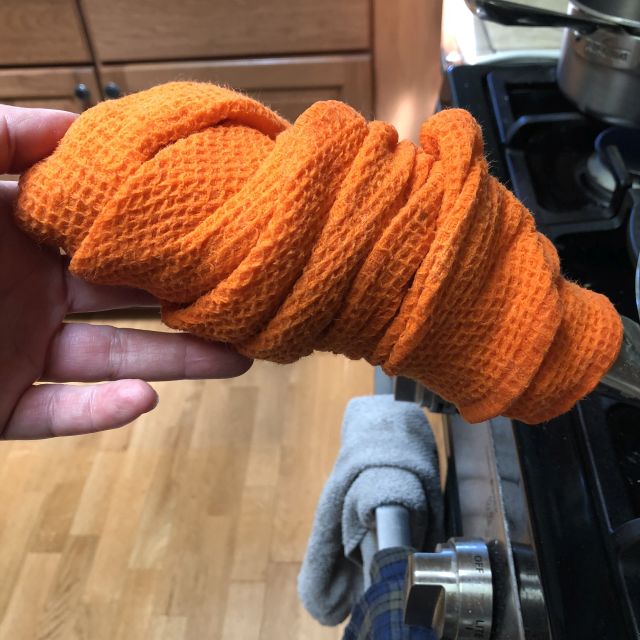
If your wok has metal handles, preheat the oven to 425F with a rack in the center position. Onwards!
Regardless of wok handle type, use paper towel to rub about 2 teaspoons of virgin flaxseed oil or canola oil on the interior and exterior metal surface.
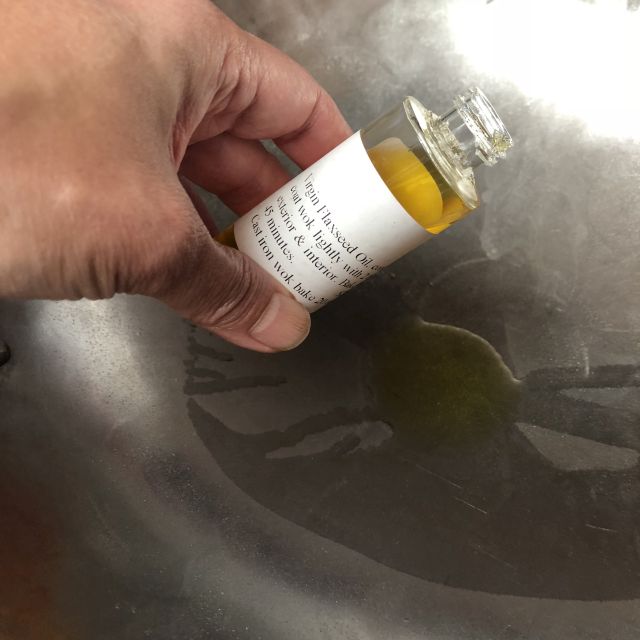
Then invert the wok and place it on the oven rack. Bake it for 30 minutes. Turn off the oven and let things gradually cool for 15 to 30 minutes. This continues the seasoning process and allows the wok to cool so you can retrieve it with few hassles.
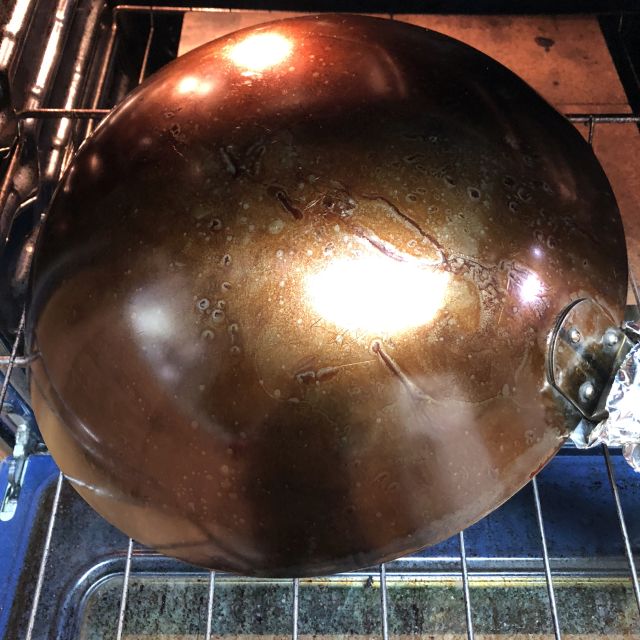
Remove the wok from the oven, then let it cool for about 45 minutes before carefully unwrapping the foil and removing the damp cloth.
Now, heat the wok over medium, add 2 tablespoons of oil (canola, peanut, grapeseed) and 1 large sliced onion. Stir-fry the onion, pressing it all over the interior. After about 10 minutes, when the onions are charred, you’re done.
Discard the onions, wash the wok without dish soap and use the softer side of the sponge. Heat the wok over low for about 2 minutes, until the wok is dry. You’re ready to wok on!
Beyond the first Wok Seasoning
During the first month or two, try to use your wok at least three times a week. You can fry an egg in it, for example. Shallow-fry, pan-fry, deep-fry, stir-fry in the wok. Wash it after each use and in between dishes if you’re cooking consecutive things in the wok. (I do not steam in the wok because that removes the patina.)
Repeated usage allows the wok to further develop its seasoning. Expect the wok to change color during its youth.
Food may initially stick but that’s the nature of your new wok relationship. Over time, you’ll develop a beautiful mature wok that’ll be a workhorse in your kitchen.
Have wok insights? Do share!!!
More wok tips
- Video tutorials on wok seasoning by Tane Chan of the Wok Shop! (on a gas or electric stove, baked or unbaked)
- My wok buying guide on plus a hack to use a wok well
Note that any links to Amazon on this website are affiliate links. I earn a small referral fee, which I put back into maintaining this site. Thanks for the support.













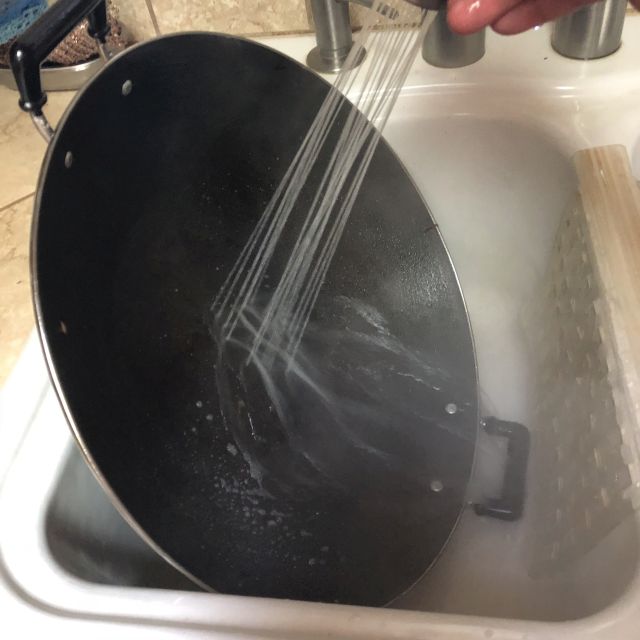
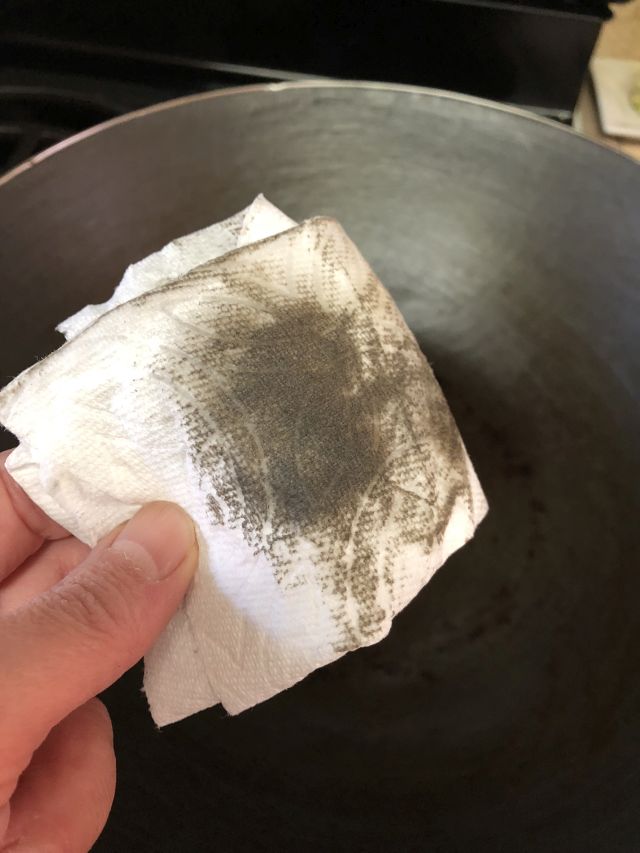
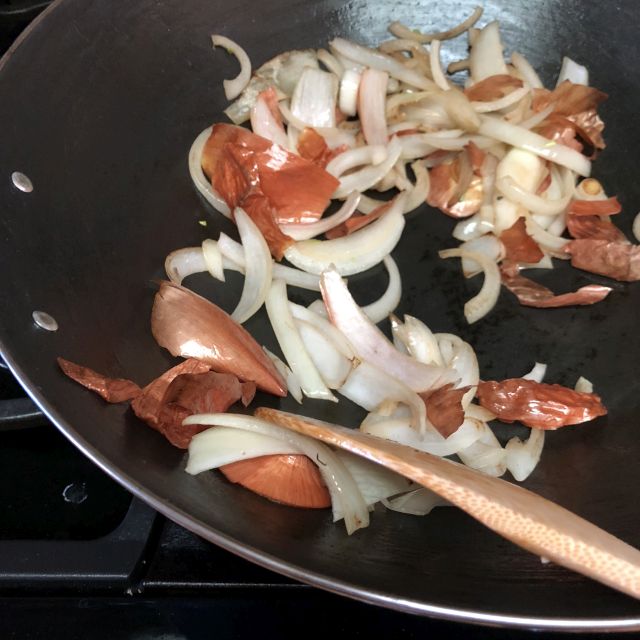
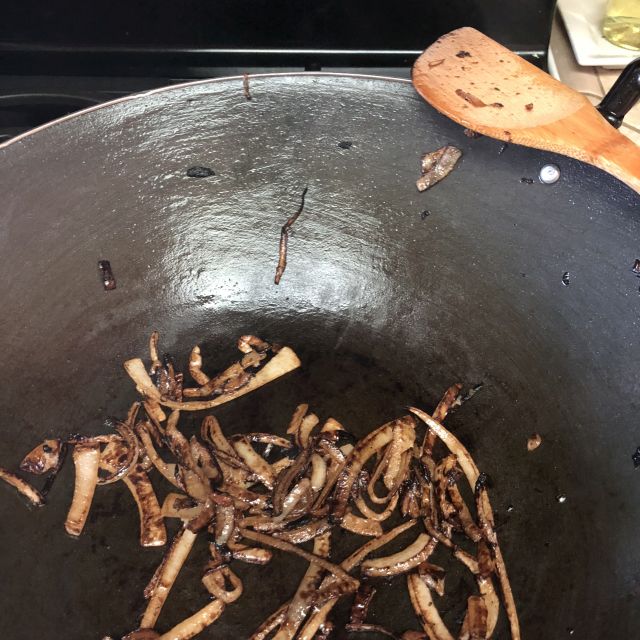




Em Chan says
Hi Andrea, I have never seen or heard of anyone in my family or acquaintances seasoning a wok! I guess I don't quite understand the rationale - can't just heating up your wok and then just doing all the standard cooking in it suffice? When did this kind of practice start? Is this from a certain region? I have so many questions, but I guess that just means I'll have to do some research, haha.
Can you recommend which method would work best for other kids of food? I'm still in surprise that this is a legitimate practice and that I've never heard of this. I have a few woks myself and I've never felt inclined that they needed prep beforehand like a baking pan. Thanks again for all your insights and advice, per usual, you're one of my favorites and I'm so upset I cannot go up to Portland to meet you!!
Andrea Nguyen says
Hi Em,
The seasoning is for a brand new wok. That's the standard approach that goes way back. I didn't invent this. Seasoning a wok is not required for each dish cooked. Once a wok is seasoned, it's ready for cooking. But know that it's the old school kind -- made of carbon steel and cast iron, that require an initial seasoning.
Hope this information helps.
Sorry to miss you in Portland!
Andrea
Asraf Abid says
Thanks for the tips. Very informative and useful article.
Darlyne Fanuga says
You've mentioned that soap should not be used when washing wok whilecseasoning it. What about washing after cooking, are we not supposed to use dish soap also?
Andrea Nguyen says
I often wash a dirty wok without soap but I let it cool for a minute before taking the warm wok to the sink to scrub. Wok superstar and guru Grace Young says you can use a drop of dish soap when washing the wok. Sometimes there's soap leftover in my scrubby sponge so I don't feel like so bad. A touch of soap is Grace approved.
TJ Rubin says
Hi Andrea--firstly, thanks for all of the knowledge you share (not just on woks). I really enjoy following your work!
Secondly, I got around to seasoning my new carbon steel wok (did a combo of the oven and potato peels, because I had the time and thought it made sense in a completely unfounded "more is better" approach). The surface is relatively nonstick and I understand it will continue to develop over time.
I first tested with chicken, which did not leave residue after cleaning. Next, I fried a few eggs, Thai style, and they lifted pretty easily, but I was left with a very thin, small, patchy layer of caked on whites. The kind that's not so noticeable unless it's under a light. I washed with the soft side of a sponge and no soap...also tried a bit of salt, but I couldn't get it all off (and wanted to avoid a harsh scrub). I did my best, dried it, and put another thin layer of oil on top and re-seasoned. I suppose my question is twofold:
1.) Should a pan always be impeccably spotless when done cleaning? (Or will a little residue not really affect the ongoing seasoning?)
2.) What would you do in this instance?
I guess that's three! Thanks a bunch in advance!
-TJ
Andrea Nguyen says
Hi TJ!
Sometimes I don't clean my wok out and when I reheat it to use, I have to wipe it out with a paper towel as it's heating. Otherwise, there's blackened bits in my next wokked dish! Or, I'll add a drop of soap to the wok and clean it, then reheat and wipe it with a smidgen of oil to do a quick reseasoning.
Woks are forgiving and I've mistreated mine many times. It always comes back to be my friend in the kitchen.
Hope that helps and thank you for reporting on your experience!
TJ Rubin says
Thanks for the reply! That's helpful. I'm definitely learning a lot as I go (and I LOVE using it!).
All best,
TJ
Lynette Truskett says
Hi, my wok is well seasoned by washing in hot soapy water, rinse in cold, dry AND run a little canola oil around it. I heat up before cooking, rub a paper towel inside to get off excess, then re heat, follow recipe with oil etc. Oh, a wok makes beautiful, crunchy home made chips too. Make sure the cut up potatoes are dried thoroughly in a clean tea towel, I use approx 2 cups canola oil. DON'T FIDDLE MOVING THEM AROUND.
Andrea Nguyen says
Thanks for the wok tip, Lynette!
Xinci says
Thanks for the tips! Just bought a wok from the S.F. Wok Shop, and their instructions are similar to yours, but the one question I had after reading the pamphlet they gave me is whether several seasoning sessions were needed or just one. Your article answered that question, thanks!
Andrea Nguyen says
OMG -- that's so cool, Xinci! The pamphlet is useful but there were a few vagaries. Enjoy your wok!